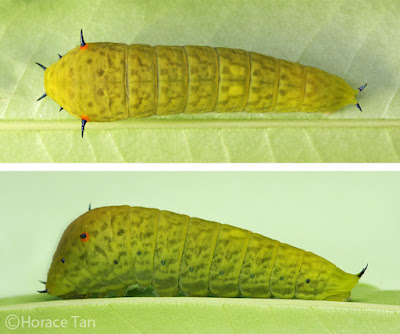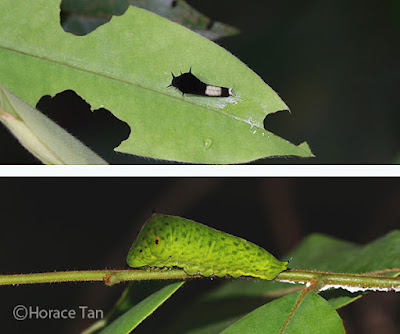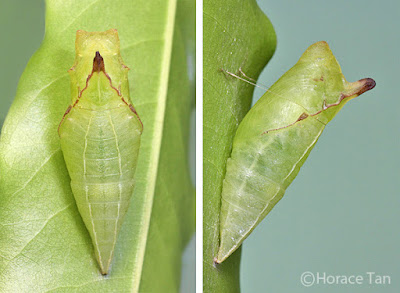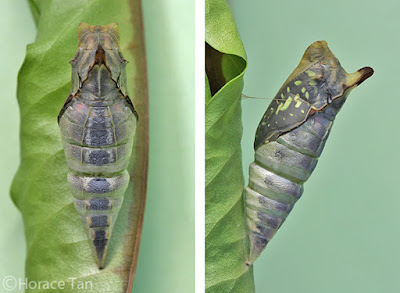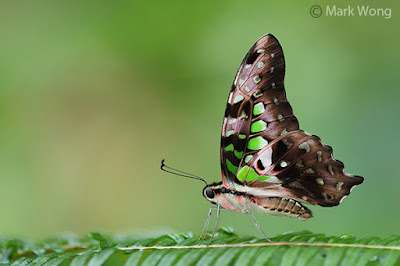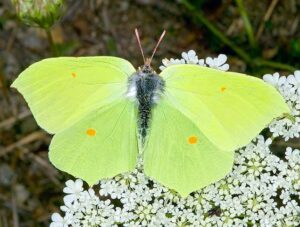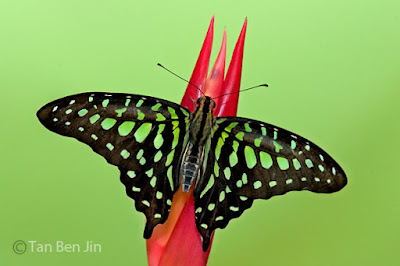
Tailed Jay
The Tailed Jay, Graphium agamemnon, is a predominantly green and black tropical butterfly that belongs to the swallowtail family. It is a common, non-threatened species native to India, Sri Lanka through Southeast Asia and Australia.
Adult wingspan: 70mm
Did you know?
This butterfly is also called Green-spotted Triangle, Tailed Green Jay, or the Green Triangle.
- Common Name: Tailed Jay
- Scientific Name: Graphium agamemnon
- Family: Papilionidae
- Subfamily: Papilioninae
- Tribe: Leptocircini
- Wingspan: 3.0 to 4.0 in
- Place of origin: Southeast Asia
Spend a moment in the Butterfly Rainforest with Ryan talking about the unusual green butterfly called the Tailed Jay, Graphium agamemnon. Also known as Green Triangle, this species of butterfly is native to Southeast Asia.
Welcome back to the Butterfly Rainforest at the Florida Museum of Natural History. My name is Ryan. And today we are going to be doing one of the green butterflies, which is a rather uncommon color for butterflies in the world, which is a bit of a shame really. We’re going to go with the butterfly known as the Tailed Jay, although some places do call it the Green Triangle for the somewhat triangular shape of its wings.
It has this lovely kind of apple-green speckling on the inside of his wings and they’re called Tailed Jays because it’s a whole group of butterflies from Southeast Asia that are referred to as jays: the Common Jay, the Blue Jay and so on and so forth. But none of them have tails at all. Not to say that this is a spectacular tail, but it is a tail.
Like other butterflies in its family, the swallowtail family, Graphium agamemnon here likes to keep its wings fluttering very fast, very much like a hummingbird. They’re not going to sit still when they are feeding on a flower. And this is true for most swallowtailed butterflies that Tailed Jays are especially known for this.
They are considered an urban species of butterfly in their home range of Southeast Asia. They are common in urban environments similar to say a Monarch here in the United States.
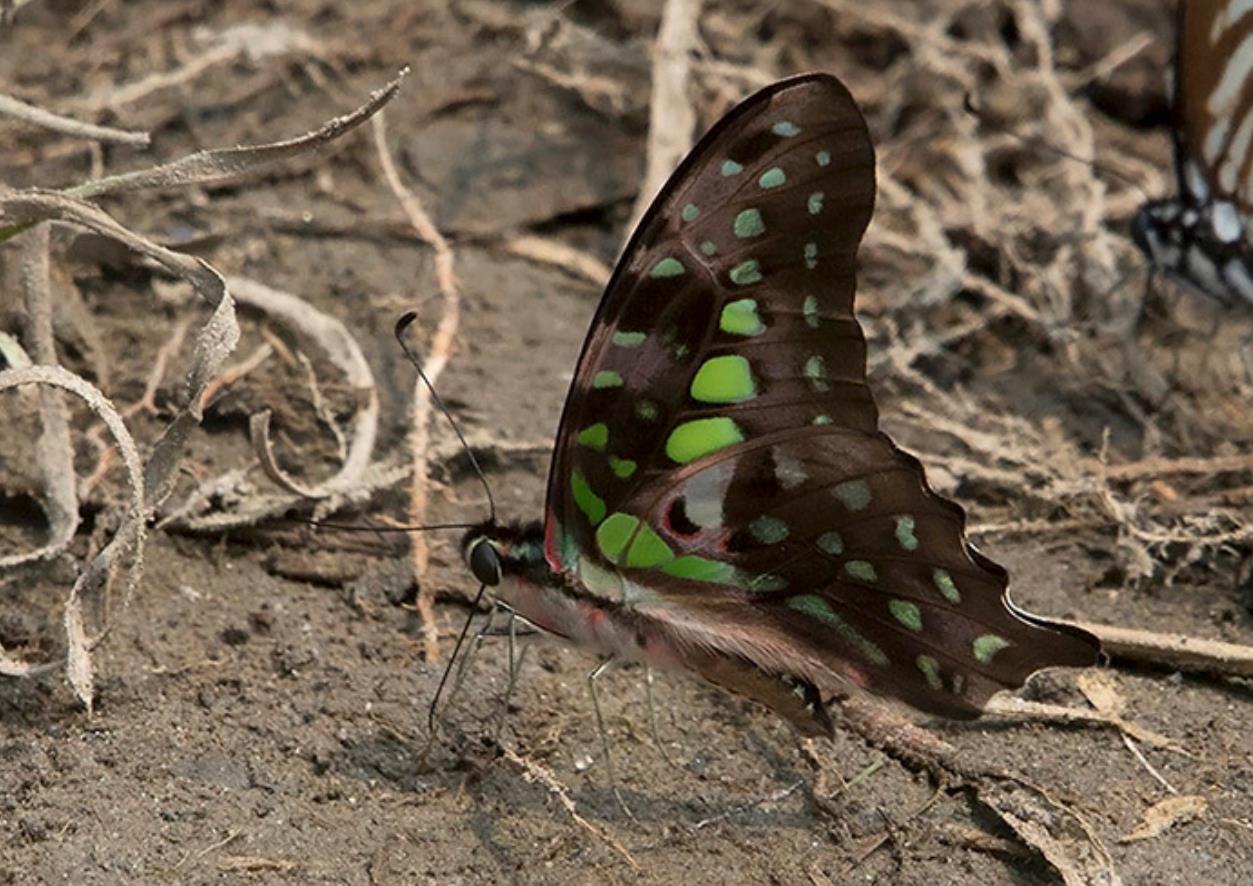
Life History of the Tailed Jay (Graphium agamemnon agamemnon)
Local Caterpillar Host Plants: Annona muricata (Annonaceae, common name: Soursop), Michelia alba (Magnoliaceae, common name: White Champaca), Annona cherimola (Annonaceae), Polyathia longifolia var. pendula (Annonaceae, common name: Ashoka Tree), and two plants (to be identified) found in Central Catchment Reserve.
Physical Description of Adult Butterfly:As with most Graphium species, the wings are produced at the forewing apex and hindwing tornus and the inner margin of the hindwing bends inwards. Above, the Tailed Jay has apple-green spots of various sizes on a black background. Underneath, the same green spotting can be found against a purple-brown background, and additional red spots are featured on the hindwing. Each hindwing has a short tail at vein 4, longer in the female than in the male.
Field Observations of Butterfly Behaviour:The swift-flying adults are not uncommon, and can be observed regularly in both nature reserves and urban parks. The adults are often sighted visiting flowers such as ixora or lantana blossom. The males of this species can be found feeding on roadside seepages or urine-tainted sand.
Early Stages:The early stages of the Tailed Jay feed on young leaves of several plants in the Annonaceae family. One recently recorded local plant is Polyathia longifolia var. pendula (Ashoka Tree). There are also two other yet-to-be-identified host plants in the nature reserves. Eggs and early stages of the Tailed Jay are typically found on saplings of the host plants at low heights.
Graphium agamemnon, the tailed jay,is a predominantly green and black tropical butterfly that belongs to the swallowtail family. The butterfly is also called the green-spotted triangle,tailed green jay, or green triangle. It is a common, non-threatened species native to Nepal, India, Sri Lanka through Southeast Asia and Australia. Several geographic races are recognized. The species was first described by Carl Linnaeus in his 1758 10th edition of Systema Naturae.
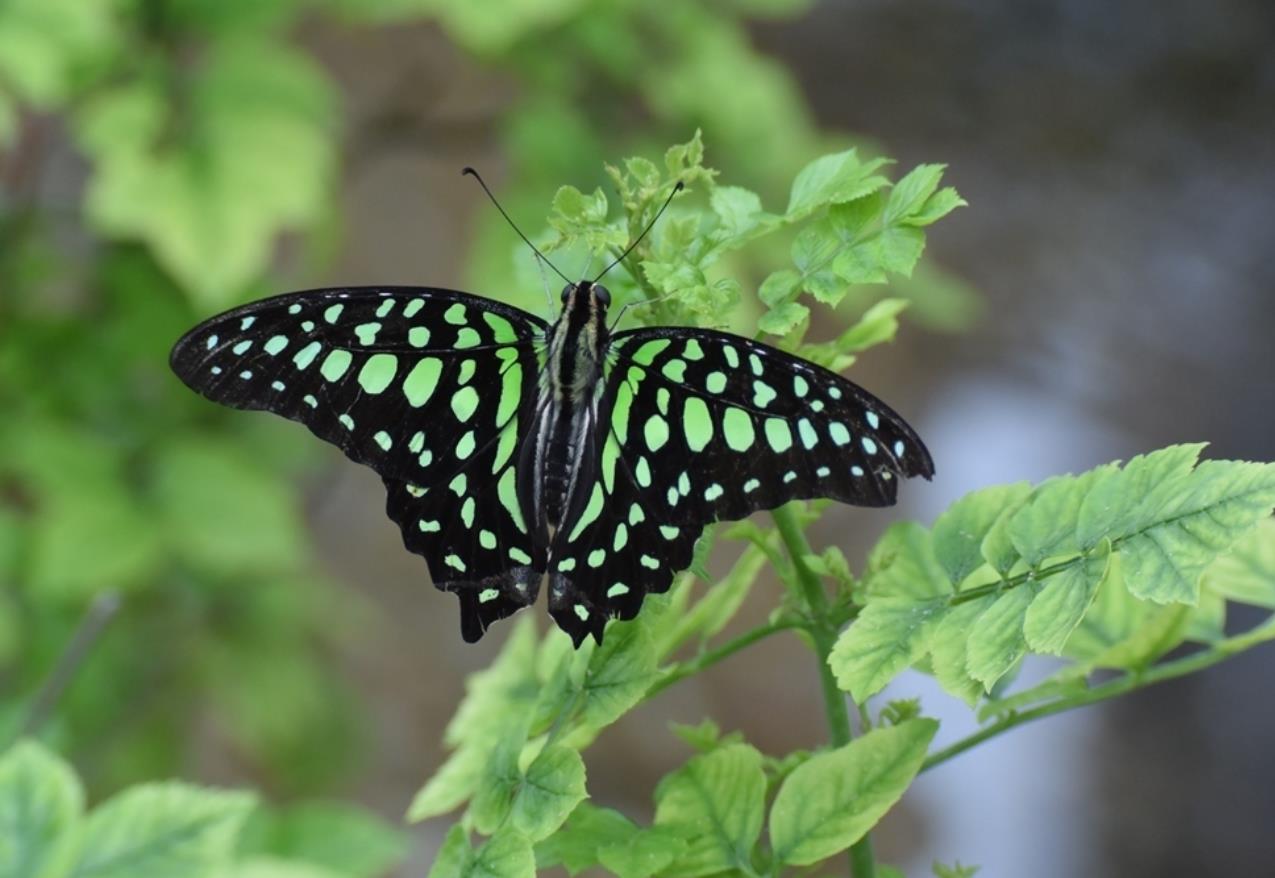
Range
Southern India to Saurashtra, northern India (Kumaon to Assam), Nepal, Sri Lanka, Andamans, Nicobars, Bangladesh, Brunei, Myanmar, Thailand, Laos, Cambodia, Indonesia, Vietnam, Singapore, southern China (including Hainan), Taiwan, Japan (Ryukyu Islands), South East Asia to New Guinea, Bougainville, Solomon Islands, and Australia (northern Queensland).
Male upperside black. Forewing with the following green markings: a spot at the extreme base of the costal margin, a transverse short bar near base of cell and seven spots beyond, two and two except the apical spot which is single; two spots beyond apex of cell; a spot at base of interspaces 1a and 1, followed by two oblique short macular bands; a discal series of spots decreasing in size towards the costa, and a postdiscal series of smaller spots that begins with two in interspace 1; the spots in interspace 7 in both series are out of line, placed outwards. Hindwing: three series of similarly-coloured markings that ran transversely across the wing more or less parallel to the dorsal margin, the upper markings (those in interspace 7) white; a short greenish stripe at the extreme base of the wing.
Underside: fuliginous (sooty) brown or brownish black, more or less suffused with pink along the costal margin, on apical area and along the outer margin of the discal markings on the forewing, broadly along the dorsal and terminal margins and at base on interspaces 6 and 7 on the hindwing; markings similar to those on the upperside but less clearly defined and somewhat more grey in tint. Hindwing black, inwardly red-margined spots superposed on the pink area in interspaces 6 and 7. Cilia very narrow, pale pink. Antennae, head, thorax and abdomen black, thorax above and the abdomen on the sides streaked with greenish grey; beneath: ochreous grey touched on the thorax with pink.
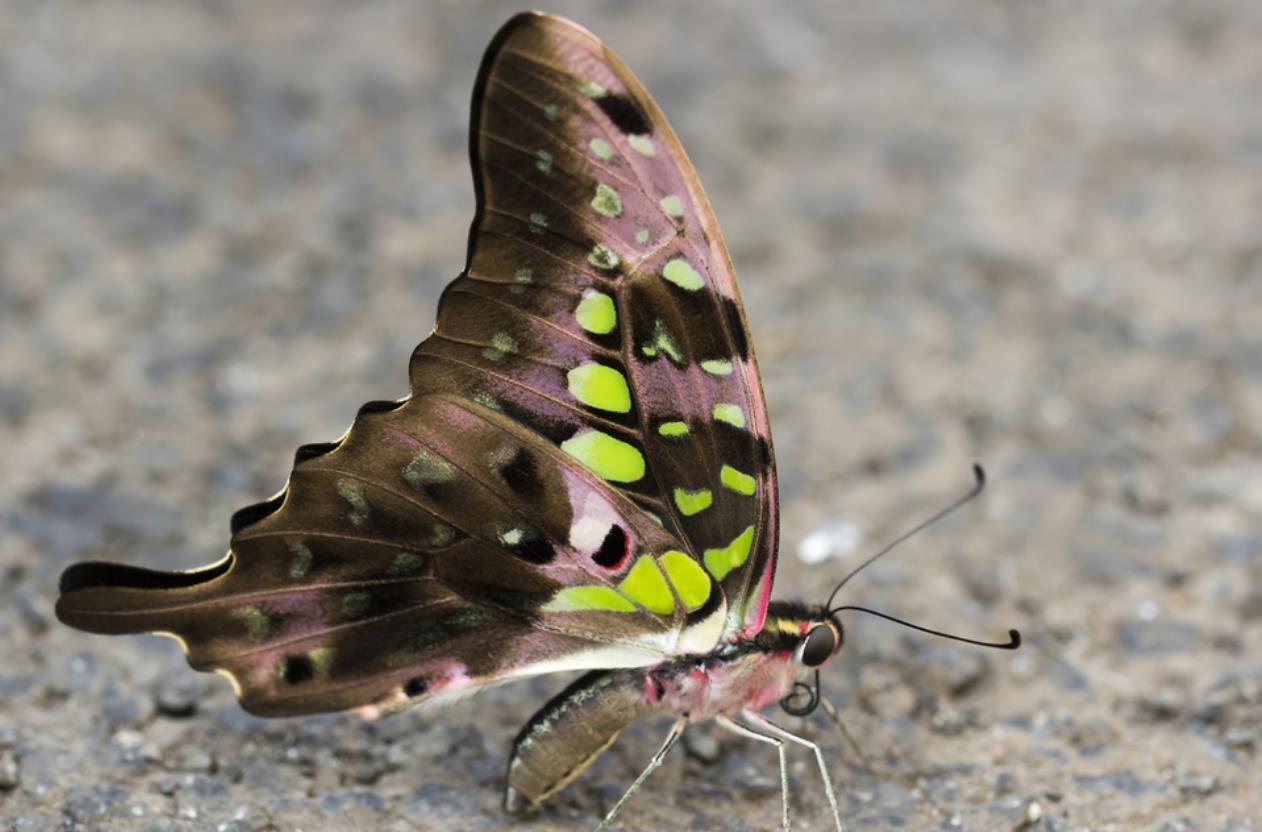
Females are similar, but with a streak of greenish white along the dorsal margin on both upper and undersides.
Race decoratus is found in the Andaman and Nicobar islands and is very similar to the typical form, from which it can be distinguished as follows: Upperside green spots smaller, especially the discal series on the forewing. Underside hindwing: the red postcostal spot is relatively small but the red part has much increased against the black part; besides the large red anal mark and the mark before the first disco-cellular veinlet, there is a large red spot in the lower median cellule (interspace 2), a smaller red spot in each of the three preceding cellules (interspaces 3, 4, 5) and a streak-like spot at the base of the lower median cellule.
Habitat
Once found primarily close to wooded country where there is a fairly heavy rainfall, the tailed jay is now very common at low elevations and regularly seen in gardens and urban areas due to its food plant, Polyalthia longifolia (false ashoka or mast tree), being widely used as an ornamental tree.
Life cycle
This species can take from 33–36 days from egg to adult. The species is multivoltine with at least seven or eight broods in a year.
Eggs
The eggs are pale yellow and are laid singly on the underside of young leaves, and hatch after three or four days.
Larva
Young larvae are dark yellowish green with a pale yellow band in the middle of the abdomen. From the head, which is moderately large, the body increases in thickness rapidly to the 4th or 5th segment and then tapers gradually down to the tail. It has four pairs of spines. The color is at first smoky black, but at the last molt becomes a light clear green faintly marked with lines of a darker shade. The fully grown larva is green, fusiform and having small black spots. It has a pair of osmeterium and black spines on each thoracic segment, the third pair being orange yellow. A fourth pair is situated on the last segment. The spines are usually black with orange rings at the base of each spine. The caterpillars undergo five instars over a period of 15–16 days, during which many are attacked by parasitoid wasps.
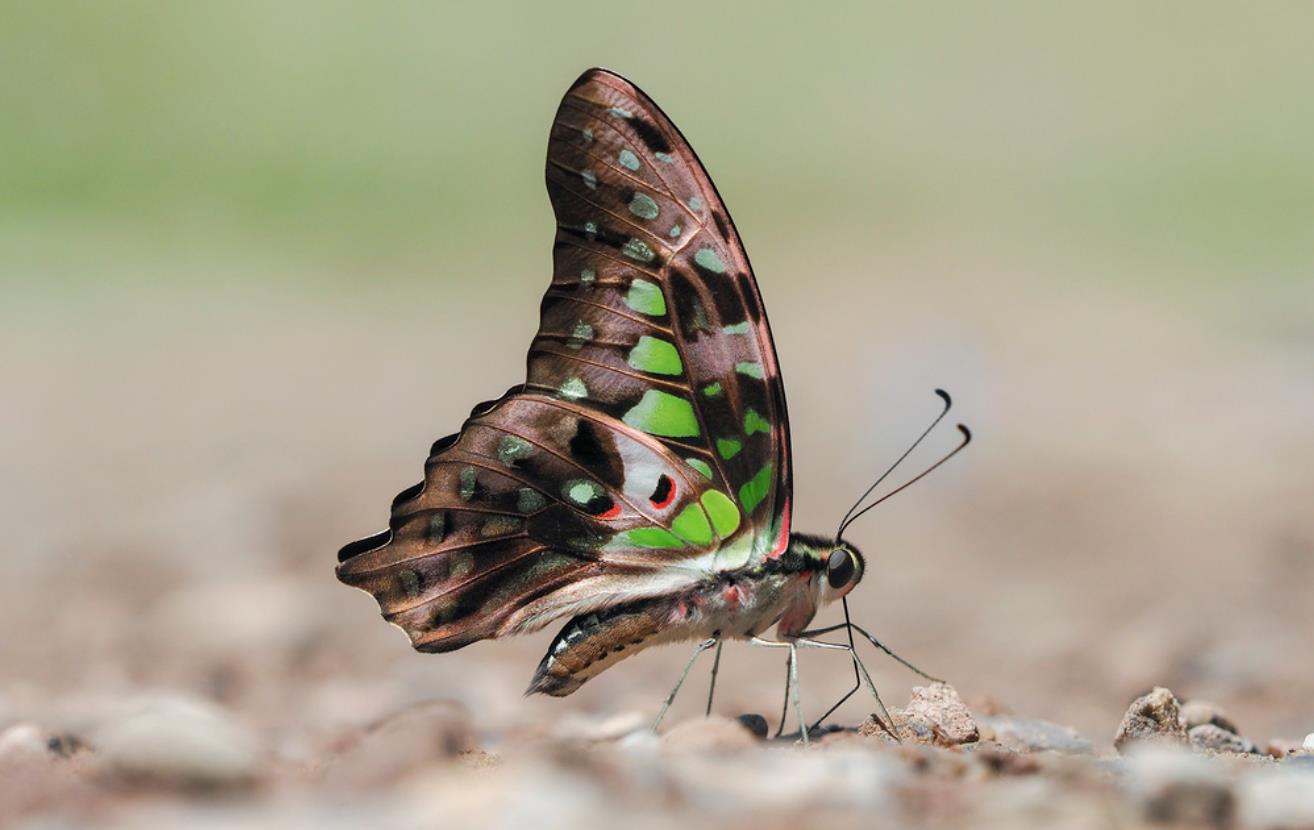
Pupa
The pupae are green or brownish. They are found attached on the underside of leaves; sometimes on the upperside, and are held in place with a body girdle. The pupal stage lasts for 13–14 days. The horns are tipped with rusty brown.
The egg takes 3 days to hatch, and the newly hatched has a body length of about 2.7mm. Typically, the entire egg shell is consumed by the newly hatched as its first meal. The body is initially pale yellowish brown but turning dark brown hours later. There are rather broad and white dorsal patches on thoracic segments and the posterior abdominal segments. A pair of yellowish brown lateral spines can be found on each of the three thoracic segments, and another pair at the anal segment. The body also features rows of short dorsal-lateral tubercles with long setae. Between feeds, the Tailed Jay caterpillar of all instars rests on the upper leaf surface, usually alongside the midrib.
After about three days of feeding on young and tender leaves, the 1st instar caterpillar grows to a length of about 6mm. Now the body looks pumped up, and assumes a yellowish brown coloration. The white dorsal patches on thoracic segments have faded away by this time. The moult to the 2nd instar takes place after a period of inactivity.
In the 2nd instar caterpillar, the thoracic segments are much enlarged from the 2nd to 3rd segment. The thoracic spines and the anal spines are pale yellowish brown. As the body grows to a length of 10mm in 3-4 days for this instar, the yellowish brown body color darkens to purplish brown.
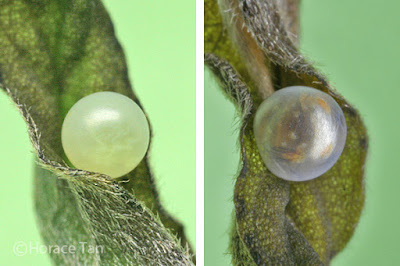
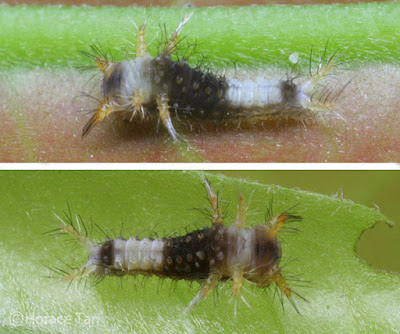
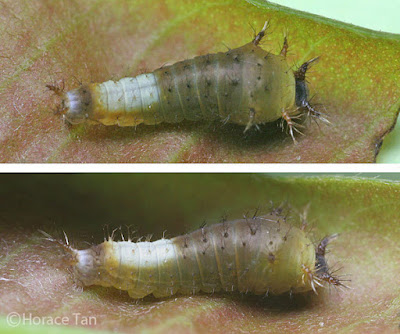
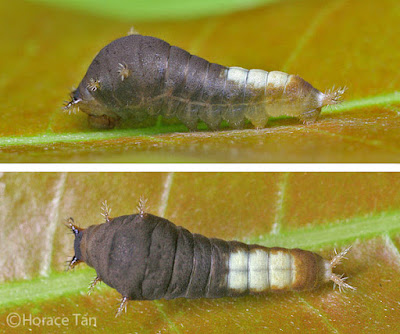
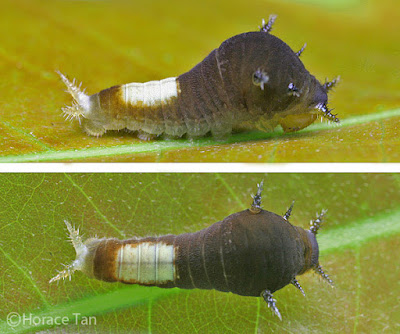
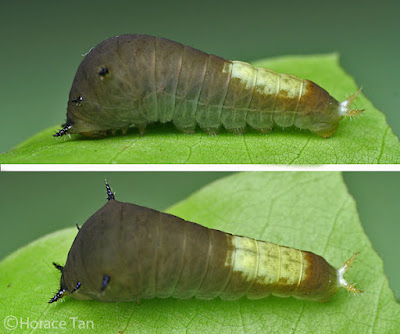
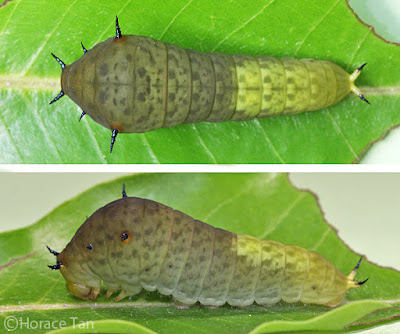
There is no drastic change in appearance in the newly moulted 3rd instar caterpillar. Noticeable are the color change of the thoracic splines to black, and the change to completely white anal spines. This instar takes another 3 days to complete with body grown to about 10mm in length.
As growth proceeds in the 3rd instar, the white dorsal patch on the posterior abdominal segments gradually changes to yellow. This instar takes another 3-4 days to complete with the body grown to about 21mm in length. Numerous small markings, dark in color, appear on the body surface towards the end of this instar. At the same time, the thoracic and anal spines become black with a bluish sheen at the distal end.
The body of the 4th instar caterpillar is mainly yellowish green and speckled with small dark green markings. The yellow dorsal patches on posterior abdominal segments have become less well defined in its boundary. Each thoracic spine on the 3rd thoracic segment now has an orange circular base. This instar lasts a further 3-4 days with body length reaching about 26mm.
The 5th instar caterpillar resembles the late 4th instar caterpillar, but without the dorsal patch and with the body color in a more uniform colour of yellowish green to orchre-yellow. The 5th instar lasts for 5-6 days, and the body length reaches 40-43mm.
Toward the end of the 5th instar, the body gradually shortens in length. At the same time, the body turns completely yellow with all markings faded away. After doing some wandering around for a pupation site, the caterpillar eventually comes to rest on the surface of a leaf in an upright position and becomes a pre-pupatory larva. Here the caterpillar prepares a silk pad, and a silk girdle, both of which are critical for the success of the pupation event later on.
Pupation takes place a day later. The pupa suspends itself with a silk girdle from the leaf surface, further secured with and a firm anchor at the posterior end. The pupa is yellowish green, about 33mm in length and has a slender and obtusely pointed thoracic process. The abdomen has two dorsal carinae. Reddish brown ridges run laterally to the tip of the mesothoracic horn which is directed forwards.
The pupal period lasts for 12-13 days, and the pupa turns black in the wing pads the night before eclosion. The apple-green spots on the forewings also become visible through the pupal skin at this stage. The adult butterfly emerges the next morning to commence the “high-flying” phase of its life cycle.
